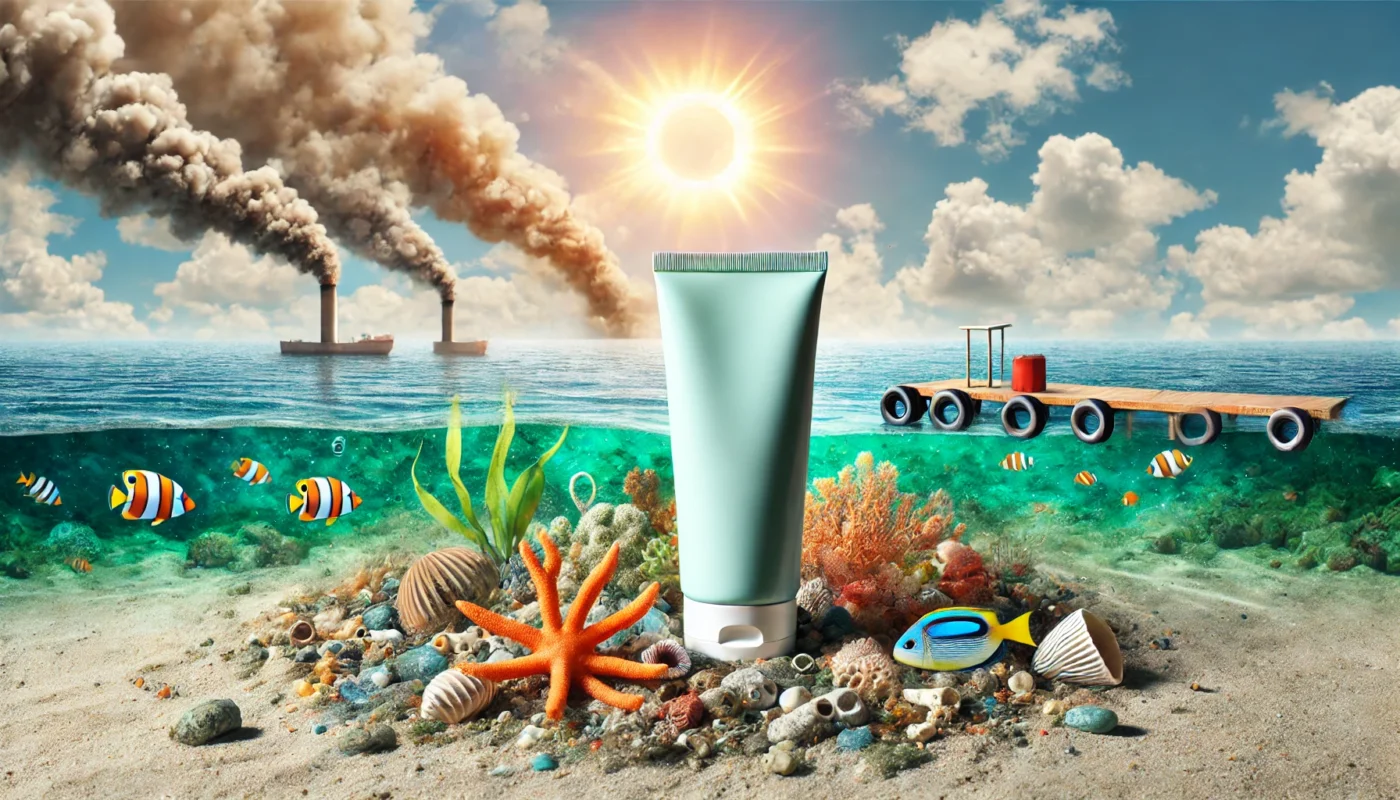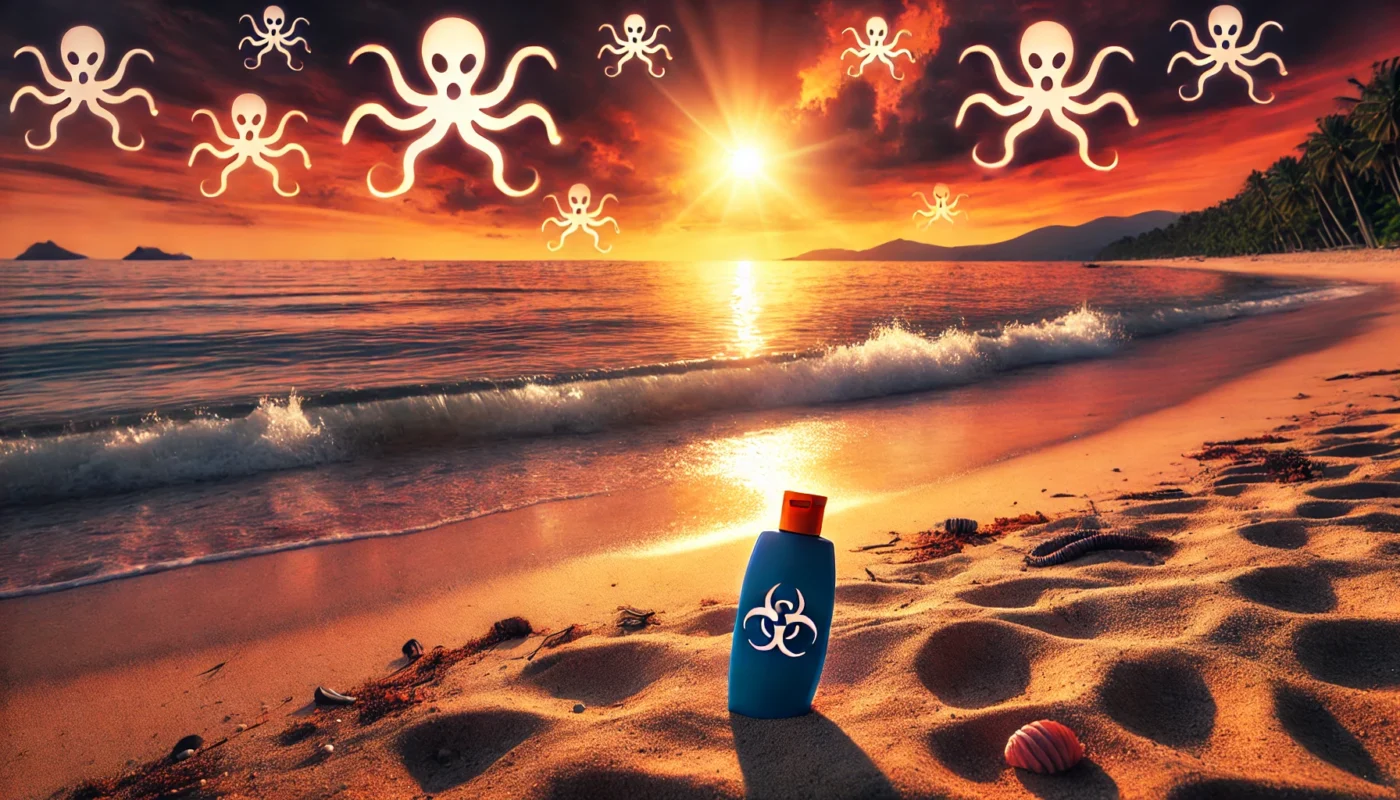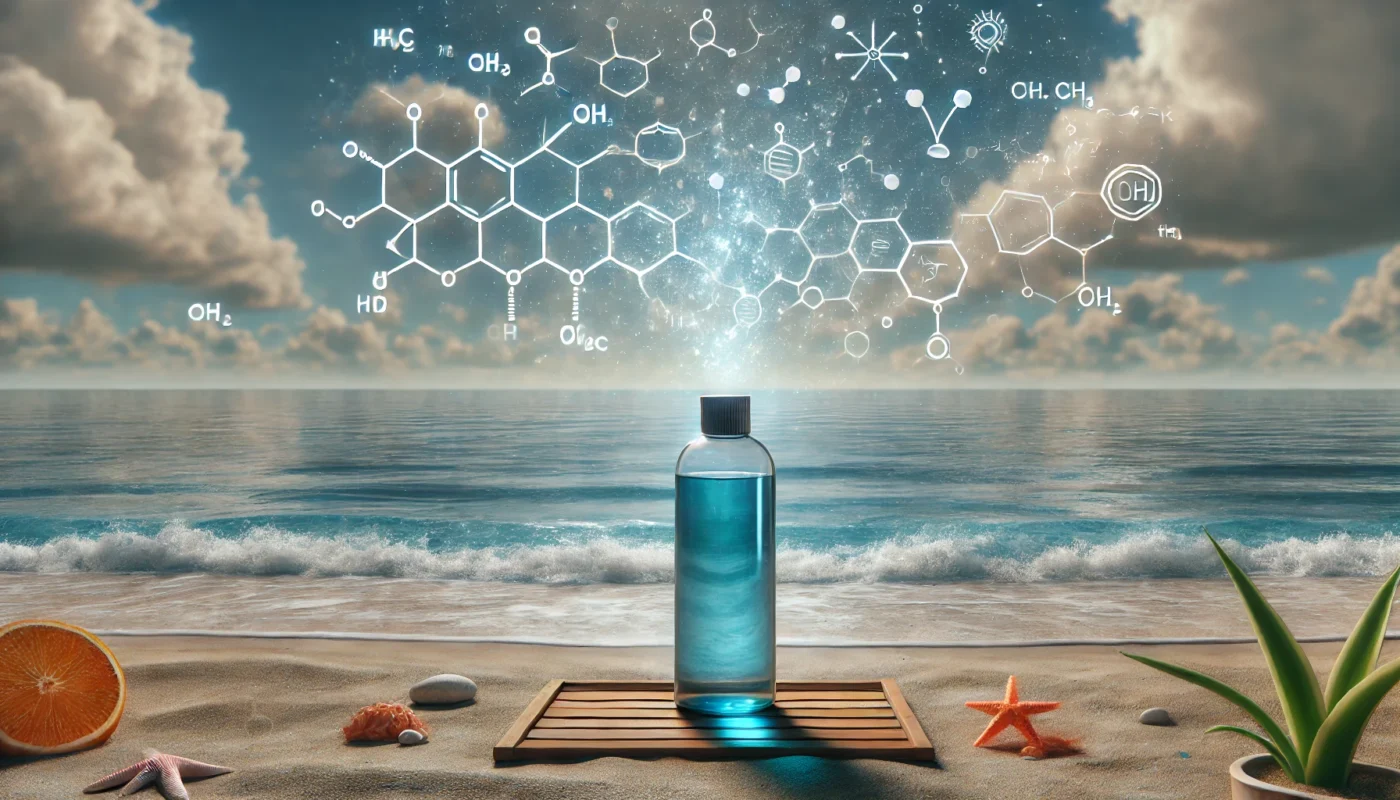Sunscreens are composed of a variety of chemicals and minerals that work to block or absorb ultraviolet (UV) radiation. Understanding these components is key to selecting the right product for your skin type and lifestyle.
You may also like: Essential Tips for Sun Protection Daily
Chemical Absorbers
Chemical sunscreens contain organic compounds such as oxybenzone, avobenzone, and octisalate, which absorb UV radiation and release it as heat. These compounds are praised for their ability to form a thin, invisible film on the skin, making them a popular choice for everyday wear. However, the effectiveness of these chemicals depends on proper application; they must be applied 15 to 30 minutes before sun exposure to form a protective barrier. Additionally, it’s crucial to reapply chemical sunscreens every two hours or after swimming or sweating to maintain their protective capabilities.
Physical Blockers
On the other hand, physical sunscreens use mineral ingredients like zinc oxide and titanium dioxide to reflect UV radiation. These substances are often preferred for their broad-spectrum protection and minimal skin irritation. Unlike chemical sunscreens, physical blockers start working immediately upon application, providing an instant shield against harmful rays. Although they are less likely to cause allergic reactions, some users find the white cast left by these minerals undesirable, particularly on darker skin tones. Recent advancements, however, have led to formulations that minimize this effect, making them more appealing to a broader audience.
The Role of Inactive Ingredients
Beyond active ingredients, sunscreens also contain a variety of inactive components that influence texture, fragrance, and shelf life. Emollients and humectants are commonly added to enhance spreadability and moisturization, while preservatives extend the product’s longevity. However, these additives can sometimes trigger allergic reactions or skin sensitivities, particularly in individuals with sensitive skin. Therefore, it’s essential to scrutinize the entire ingredient list and opt for products tailored to your specific skin needs.
Is Sunscreen Safe?
The question of sunscreen safety is multifaceted, involving considerations of both short-term skin reactions and long-term health implications. While sunscreens are designed to protect, they can sometimes cause adverse effects that warrant careful evaluation.
Immediate Skin Reactions
Some individuals experience allergic reactions or skin irritations from sunscreen, often due to fragrances, preservatives, or specific active ingredients. Patch testing is a valuable precautionary measure to identify potential allergens, especially when trying a new product. Conduct a patch test by applying a small amount of sunscreen to a discreet area of skin and observing any adverse reactions over 24-48 hours. This practice can prevent widespread irritation and ensure that the chosen sunscreen is compatible with your skin type.
Long-term Health Concerns
Concerns have arisen regarding the systemic absorption of sunscreen chemicals. Studies suggest that ingredients like oxybenzone can be absorbed into the bloodstream, where they may act as endocrine disruptors. This potential hormonal interference is particularly worrisome for pregnant women and young children, as endocrine disruptors can affect developmental and reproductive health. Ongoing research is examining the long-term effects of these chemicals, urging consumers to remain informed and cautious about their sunscreen choices.
Regulatory Perspectives on Safety
Regulatory bodies such as the FDA and the European Commission continuously assess the safety of sunscreen ingredients. While some ingredients are restricted or banned in certain regions, others are deemed safe within specified concentration limits. These regulations are based on scientific evidence and aim to protect public health. Consumers should stay informed about regulatory updates and choose products that comply with the latest safety standards.
Sunscreens and Cancer: A Double-Edged Sword?
While sunscreen is intended to protect against skin cancer by blocking UV radiation, some research has raised concerns about its potential to contribute to cancer risk in other ways. This paradox underscores the complexity of sunscreen’s role in skin health.
Sunscreen Chemicals and Carcinogenicity
The debate centers around whether certain sunscreen ingredients might have carcinogenic properties. Oxybenzone, for example, has been scrutinized for its potential to promote the development of cancerous cells under certain conditions. Animal studies have shown that high concentrations of oxybenzone can lead to tumor formation, although these findings have not been conclusively replicated in human studies. Despite the lack of definitive evidence, consumers are encouraged to remain vigilant and consider alternative ingredients if concerned about potential risks.
Vitamin D Deficiency and Health Implications
Excessive use of sunscreen can lead to vitamin D deficiency, as it blocks the UVB rays responsible for vitamin D synthesis in the skin. Vitamin D is crucial for bone health and immune function, and its deficiency has been linked to various health issues, including increased cancer risk. To balance sun protection with vitamin D needs, moderate sun exposure without sunscreen during off-peak hours can be beneficial. Additionally, incorporating dietary sources of vitamin D or supplements can help maintain adequate levels without compromising skin safety.

Balancing Sun Protection and Health
Achieving a balance between effective sun protection and maintaining overall health is essential. Dermatologists recommend a multifaceted approach, combining sunscreen with other protective measures such as clothing, hats, and sunglasses. By adopting a holistic sun safety strategy, individuals can enjoy the benefits of sun exposure while minimizing potential health risks. Regular skin checks and consultations with healthcare professionals can further ensure that sun protection practices align with personal health needs.
Sunscreen Chemicals: An Environmental Perspective
Beyond personal health concerns, sunscreen chemicals pose significant environmental risks. When washed off in oceans and lakes, compounds like oxybenzone can harm marine life, contributing to coral bleaching and the disruption of aquatic ecosystems. This environmental impact has prompted a reevaluation of sunscreen formulations and their ecological footprint.
The Impact on Marine Ecosystems
Oxybenzone and octinoxate are among the most harmful sunscreen chemicals for marine life. These compounds are toxic to coral reefs, causing bleaching and inhibiting coral growth and reproduction. The degradation of coral reefs affects biodiversity and the health of entire marine ecosystems. Recognizing this threat, several regions have enacted bans on sunscreens containing these chemicals, encouraging the use of reef-safe alternatives.
The Move Towards Eco-Friendly Formulations
In response to environmental concerns, the sunscreen industry is shifting towards more sustainable formulations. Eco-friendly sunscreens utilize biodegradable ingredients that minimize harm to aquatic life. Brands are increasingly focusing on reef-safe labels, which indicate the absence of harmful chemicals. Consumers can contribute to environmental preservation by choosing products that prioritize both personal and planetary health.
Policy and Advocacy for Environmental Protection
Governments and environmental organizations play a pivotal role in advocating for sunscreen regulations that safeguard marine ecosystems. Public awareness campaigns and educational initiatives aim to inform consumers about the environmental impact of sunscreen chemicals. By supporting policies that promote sustainable practices, individuals can help drive positive change and protect the planet for future generations.
Is Sunblock Bad for Your Skin?
The suitability of sunblock for your skin depends on your skin type and the specific formulation of the product. While mineral-based sunscreens are generally considered safe and less irritating, they may leave a white cast on the skin, which some users find undesirable. Understanding your skin’s unique needs and preferences is key to selecting the right sunblock.
Choosing the Right Sunscreen
To mitigate potential risks, choose sunscreens with safer active ingredients like zinc oxide or titanium dioxide. Look for products labeled “broad-spectrum” to ensure protection against both UVA and UVB rays, and opt for formulations free from fragrances and parabens if you have sensitive skin. For those with oily or acne-prone skin, non-comedogenic sunscreens can prevent pore clogging and breakouts. By tailoring sunscreen choices to your skin type, you can enhance sun protection while maintaining skin health.

Addressing Common Concerns
Common concerns about sunblock, such as texture and finish, can influence user satisfaction and compliance. Some individuals dislike the greasy or heavy feel of certain formulations, which can deter consistent use. Lightweight, matte-finish sunscreens are available to address these preferences, making daily application more pleasant. Consulting with a dermatologist can provide personalized recommendations based on skin type and lifestyle, ensuring optimal sun protection.
Innovations in Sunblock Technology
Advancements in sunblock technology continue to improve product performance and user experience. Formulations with micronized or nano-sized particles reduce the visibility of white casts, enhancing aesthetic appeal. Additionally, innovations in delivery systems, such as sprays and powders, offer convenient application options. By staying informed about the latest developments, consumers can access cutting-edge sun protection solutions that align with their needs.
Practical Tips for Safe Sunscreen Use
Effective sunscreen use requires more than just selecting the right product. Proper application and complementary protective measures are essential for maximizing sun safety.
- Apply Generously and Reapply Often: Use about a shot glass-sized amount for full-body coverage and reapply every two hours or after swimming or sweating. Coverage should be even and thorough, paying attention to often-missed areas like ears, neck, and the tops of feet.
- Check Expiration Dates: Sunscreen loses its effectiveness over time, so ensure you’re using a product within its shelf life. Storing sunscreen in a cool, dry place can help maintain its efficacy, preventing degradation from heat and light exposure.
- Complement with Other Protective Measures: Use hats, sunglasses, and protective clothing to minimize sun exposure, especially during peak UV hours. Seeking shade and avoiding direct sun during midday can further reduce UV exposure and complement sunscreen efforts.
- Consult with a Healthcare Professional: If you have concerns about specific ingredients, discuss them with a dermatologist or healthcare provider to tailor your sun protection strategy to your individual needs. Regular skin checks and professional guidance can help detect early signs of skin damage and ensure comprehensive care.
The Future of Sunscreen: Innovations and Alternatives
The sunscreen industry is evolving with a focus on safer and more environmentally-friendly formulations. As consumer awareness grows, demand for innovative solutions that prioritize health and sustainability is driving significant advancements.
Research and Development
Innovations in sunscreen technology aim to reduce chemical absorption while enhancing UV protection. Products incorporating natural ingredients and biodegradable components are gaining popularity. Research is exploring the potential of plant-based antioxidants and DNA repair enzymes to augment traditional sun protection methods. By leveraging cutting-edge science, the industry seeks to develop sunscreens that offer superior safety and efficacy.
Holistic Approaches to Sun Protection
Consider integrating alternative sun protection strategies, such as consuming antioxidant-rich foods that help the skin combat UV damage from within. Supplements containing astaxanthin, beta-carotene, and vitamin E may also bolster the skin’s resilience to sun exposure. Lifestyle modifications, including maintaining a balanced diet and staying hydrated, can further enhance the skin’s natural defense mechanisms.
Consumer Advocacy and Education
Empowering consumers with knowledge about sunscreen ingredients and their effects is crucial for informed decision-making. Educational initiatives and transparent labeling practices can enhance consumer trust and promote responsible sunscreen use. By advocating for greater transparency and accountability in the industry, consumers can drive positive change and ensure that sun protection products align with their values and priorities.

Conclusion
Sunscreen remains a valuable tool in our sun protection arsenal, but understanding the hidden risks associated with certain ingredients is vital. By making informed choices and adopting a holistic approach to sun protection, we can safeguard our skin and overall health while minimizing environmental impact. Always remain vigilant about the products you use, and consider consulting with a healthcare professional to ensure the best care for your skin. As the industry continues to innovate, staying informed and proactive will empower consumers to make choices that reflect both personal and planetary well-being.
Further Reading:
Is Sunscreen Helpful or Harmful?
sunscreen, sunblock, sunscreen safety, sunblock chemicals, sunscreen and cancer, physical sunscreens, chemical sunscreens, sunscreen risks, vitamin D, marine ecosystems, eco-friendly sunscreen, skin health, sun protection, UV radiation, allergic reactions, skincare, holistic sun safety, environmental impact, skin irritation, sunscreen innovations.
Important Note: The information contained in this article is for general informational purposes only, and should not be construed as health or medical advice, nor is it intended to diagnose, prevent, treat, or cure any disease or health condition. Before embarking on any diet, fitness regimen, or program of nutritional supplementation, it is advisable to consult your healthcare professional in order to determine its safety and probable efficacy in terms of your individual state of health.
Regarding Nutritional Supplements Or Other Non-Prescription Health Products: If any nutritional supplements or other non-prescription health products are mentioned in the foregoing article, any claims or statements made about them have not been evaluated by the U.S. Food and Drug Administration, and such nutritional supplements or other health products are not intended to diagnose, treat, cure, or prevent any disease.

